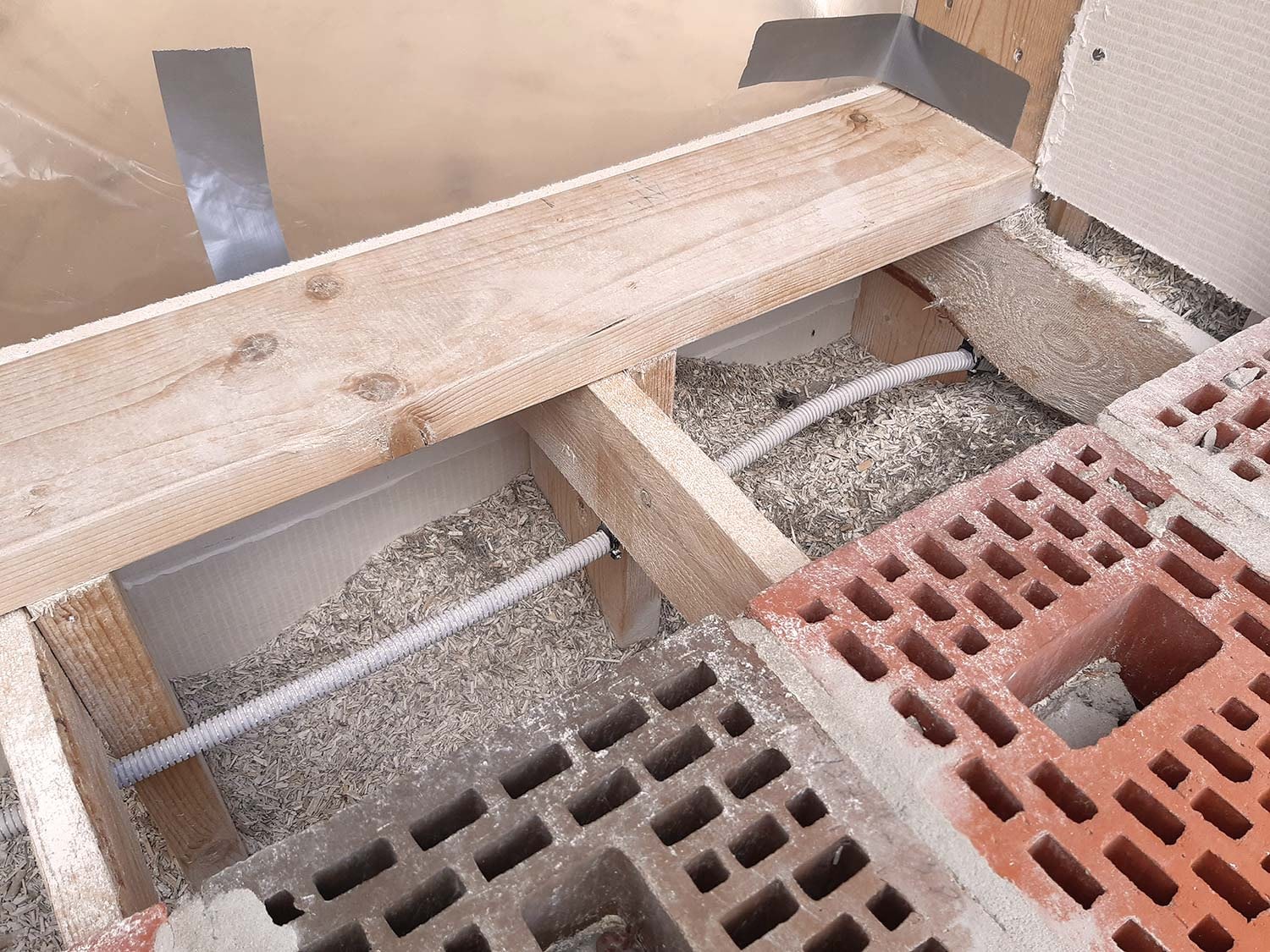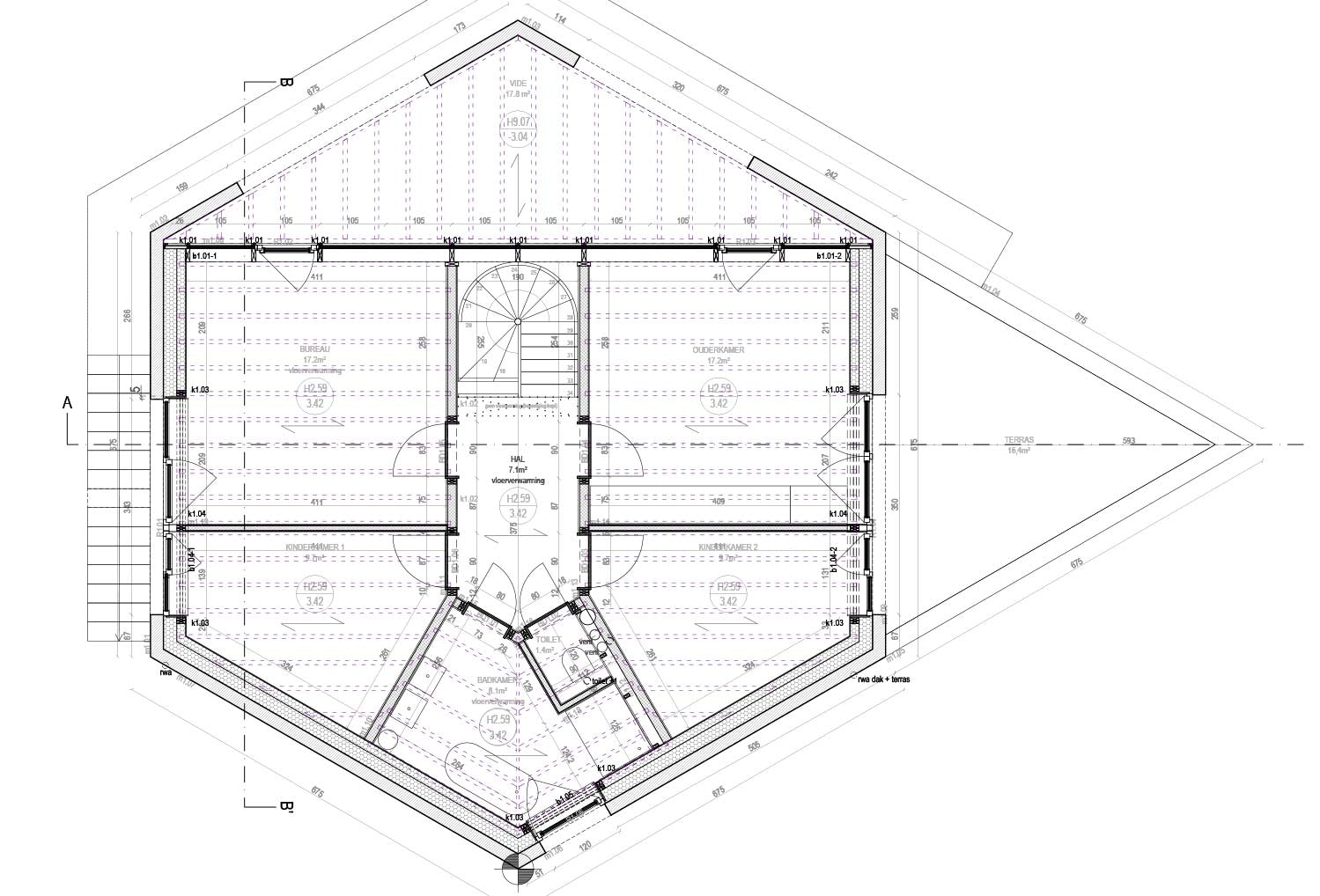Thu 15 Sep
09:50
BLAF architecten, Lokeren
jtB house
The cavity wall construction with facing bricks has been the predominant building system in Flanders (BE) and many European regions since the 1950’s. Because of its invisibility – the cavity can only be made comprehensible in drawings or simulations –, the cavity has allowed for the adaptation of the construction to new standards, i.e. the successful integration of thermal insulation during the 1970’s oil crisis, and has added to the hybridity of construction and the (poetic) dissociation of the structure and the expression of architecture. As a result, the brick faced cavity wall today still embodies the continuity of the image of our built environment.
Today, as a result of two decades of progressive energy performance regulations since the introduction of the European EPBD and the rise of circularity as a design concern, the brick faced ventilated cavity wall with thermal insulation has reached the limits of its performance and practicability. Suspending a brick façade leaf, bridging cavities up to 30 cm, has become overly complex, expensive, error prone and detrimental for the lifespan of brickwork. With facing bricks losing ground as a façade material, the question of the cavity becomes visible: the image of architecture is changing and the designing of the façade is shifting towards the engineering of the building skin.
BLAF architecten reject the transition to brick cladding and material reduction, promoted by brick industries as the answer to this challenge. Brick has low shadow costs: low maintenance, low resource impact, local production, low water impact, and most importantly a long lifespan, which compensate for the energy consumption and CO2 emissions of the production process. If the application is informed by these assets, brick can stay relevant as a building material for new buildings in the future. A potential convincingly displayed by adaptive reuse practices of pre-cavity wall brick buildings with loadbearing shells, putting the long term durability of the brick construction before the reuse of the singular brick – a strategy reflected in the concept of ‘the intelligent ruin’ [Bob Van Reeth].
With the development of the “Big Brick”, BLAF explores -in practice- the potential of new self-bearing brick shells as a strategy to combine circular construction with the call for the design responsibility for the long term image of the façade. Unlike loadbearing shells and cavity wall façade leafs, the self-bearing brick shell reduces the complexity of construction and (post-)insulation. It enhances the optimalisation of the construction sequentiality, the dismountability of the different layers of the construction, the use of non-rigid renewable insulation materials, and the use of structural wood construction.
Since 2016, two production lots of Big Brick have been applied in a series of case study buildings, the jtB house being the most recent in this series. The 22 cm self-bearing Big Brick shell and the structurally detached timber frame infill, finished with interior magnesium construction panels, leave a total cavity of 34 cm, to be completely filled with poured dry lime hemp insulation. The result is a breathable hybrid wall, with no structural or thermal bridges, no complex construction knots, no foils, no toxic materials, and no ventilated cavity. The hygroscopic capacity of the bio based lime hemp insulation is key: it prevents the timber frame from rotting, and tackles the risk of summer condensation on the back side of the brickwork.

© BLAF architecten

© BLAF architecten
Lieven Nijs
Lieven Nijs (Gent, 1976) graduated as an architect in 1999 at the Sint Lucas Architecture School in Gent, Belgium. In 2003 he established the BLAF architecten practice with architect Bart Vanden Driessche (Lokeren, 1973). Nijs is affiliated with the Department of Architecture and Urban Planning of the Ghent University since 2008, as a teaching assistant in architectural design and design theory. He is currently mandated vice chairman of the Kwaliteitskamer Gent, the quality advisory committee of the Ghent city architect.